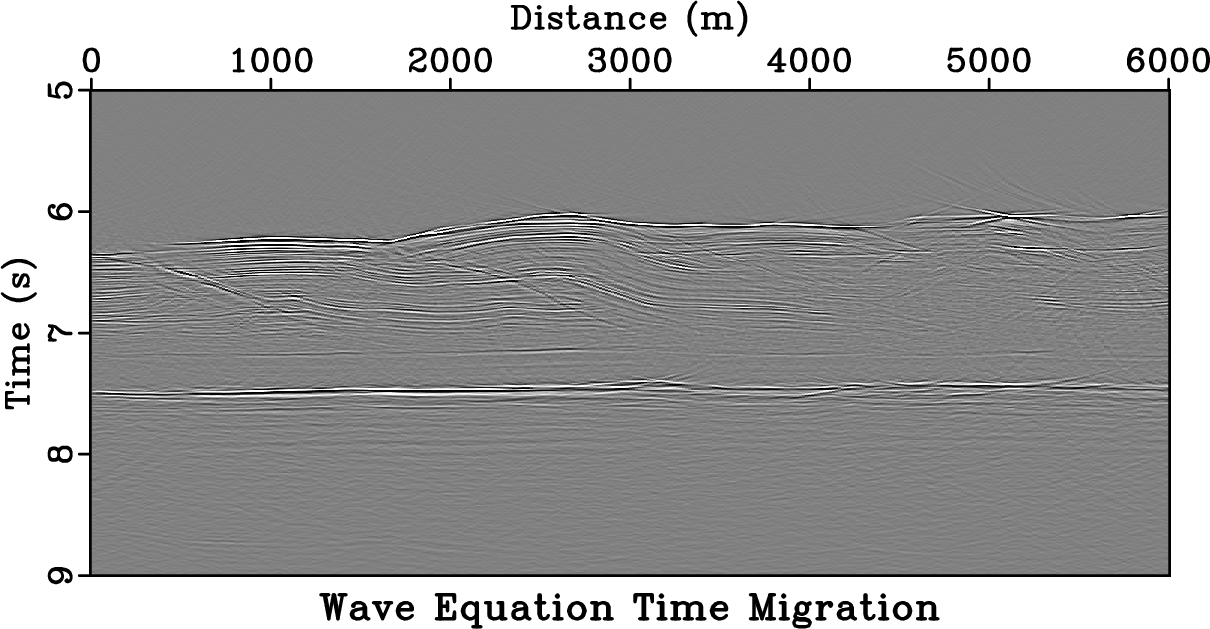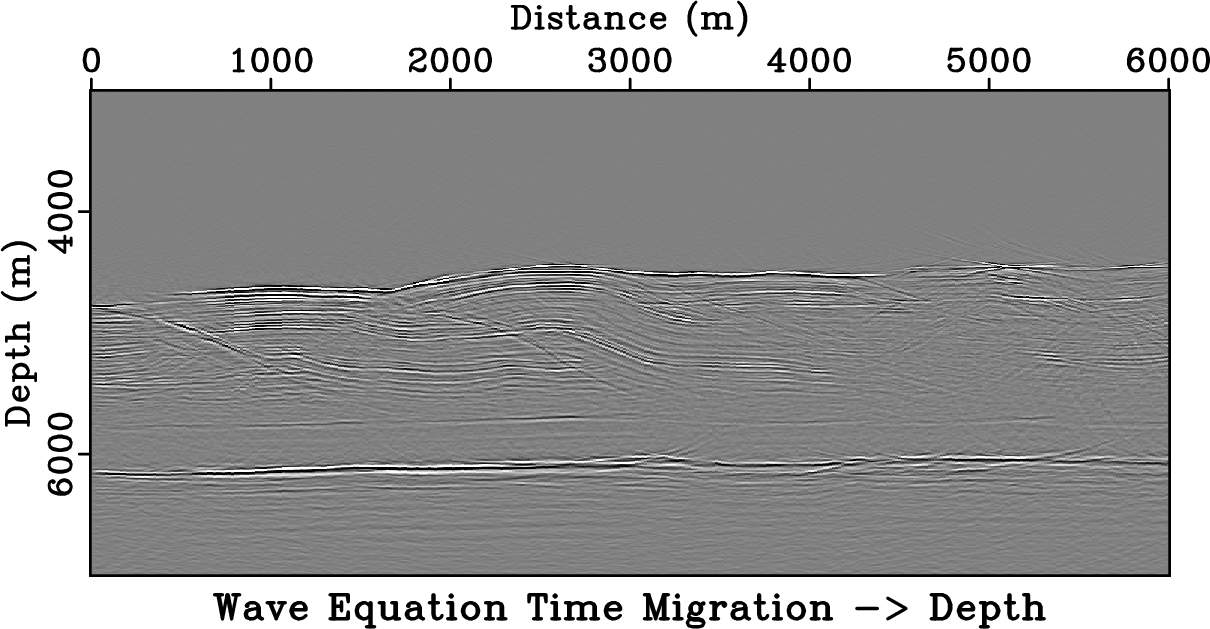|
|
|
|
Wave-equation time migration |



|
|---|
|
slice,vpickk,kpstm2
Figure 5. (a) Stacked section for Nankai field data. (b) Time-migration velocity, and (c) Image obtained by Kirchhoff time migration. |
|
|


|
|---|
|
veltestw,wetmnan
Figure 6. (a) Dix velocity, and (b) Image obtained by wave-equation time migration using RTM in image-ray coordinates. |
|
|


|
|---|
|
zoom,zoom2
Figure 7. Zoomed in portion (a) Stacked section (b) Conventional time migration and (c) wave-equation time migration shows that water layer is correctly focused and faults are delineated more clearly and are migrated to their true subsurface position with our proposed method as compared to the conventional time migration. |
|
|



|
|---|
|
refdix,alpha,beta
Figure 8. The inputs for time to depth conversion of velocities for the Nankai field data example: Dix velocity squared |
|
|


|
|---|
|
finalv,imageraysnan
Figure 9. (a) The estimated interval |
|
|


|
|---|
|
finalmapd,rtmsf
Figure 10. (a) Image obtained using wave-equation time migration after conversion to Cartesian coordinates. (b) Image obtained using depth migration using RTM in Cartesian coordinates. |
|
|
|
|
|
|
Wave-equation time migration |